Black Hills 5.56mm 50 grain TSX: Accuracy, Velocity and Terminal Ballistics
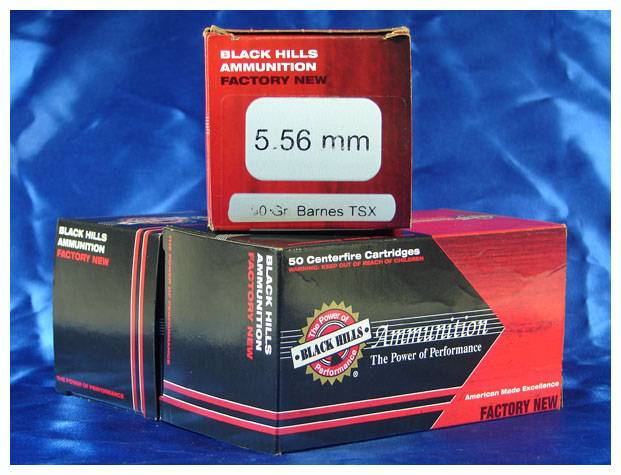
Today, we have a wider selection of quality self-defense ammunition for our AR-15s to choose from than ever before. The construction and function of these modern self-defense loads is not limited by the archaic confines proffered by the Hague Conventions and far surpasses the consistency of terminal ballistic properties of “old school” loads such as M193 and M855.
There are two modern schools of thought regarding the selection of the type of projectile to use in a self-defense load; the first preferring a fragmenting, heavy (75-77 grain) OTM bullet and the second opting for an expanding “blind-to-barriers” bullet. Some of the top performers in the fragmenting, heavy OTM match category are Hornady’s 5.56mm 75 grain TAP T2, the Black Hills Ammunition load utilizing the Sierra 77 grain Tipped MatchKing and the Nosler 77 grain Custom Competition.
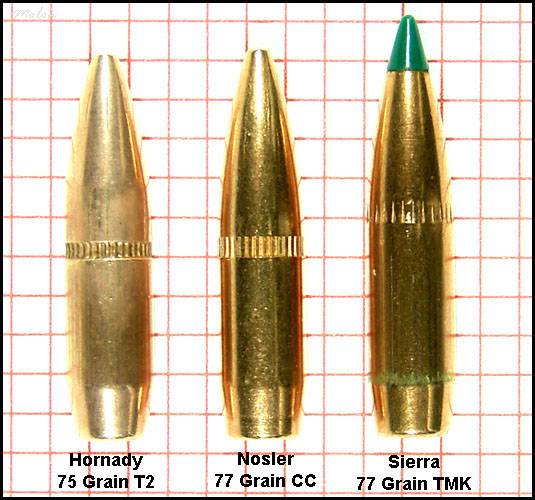
A plethora of 5.56mm/223 Remington loads utilizing expanding barrier-blind projectiles have come to the market in the last several years. Top performers in this category include the 62 grain Trophy Bonded Bear Claw found in Federals LE223T3 load and the Nosler 64 grain Bonded Solid Base bullet with “Protected Point Design” loaded in Nosler Defense Ammunition. Both of these bullets have their lead-cores bonded to their copper jackets. (Both of these bullets are also found in the 5.56mm FBI loads.) Another top performer in the expanding barrier-blind category is the Barnes 50 grain TSX bullet found in the 5.56mm Black Hills load. This is the load that is the focus of this range report.
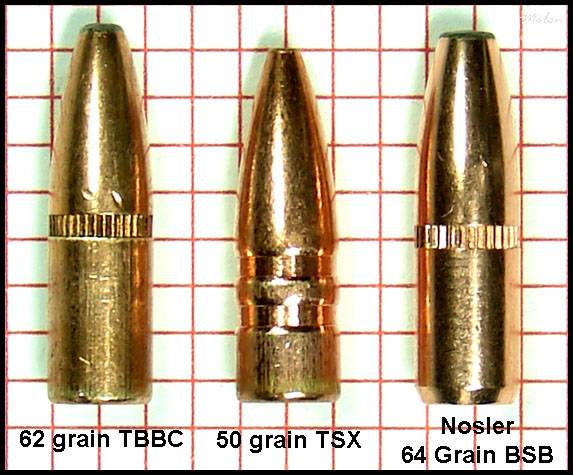
The monolithic (all copper) Barnes 50 grain TSX hollow-point bullet used in the 5.56mm Black Hills load is a proprietary design; it’s not the same 50 grain TSX projectile that is available as a reloading component. The proprietary 50 grain TSX was developed to provide better blind-to-barriers performance after passing through automobile safety glass (windshields) compared to the standard TSX projectiles. The original TSX bullets have unfortunate occurrences of the expanding petals shearing-off (or collapsing-in on themselves) when passing through auto safety glass. The proprietary 50 grain TSX has greatly improved on this situation (although the petals of the new 50 grain TSX still tend to collapse-in on themselves when passing through sheet metal barriers.)
A side effect of the proprietary 50 grain TSX projectile’s ability to expand and retain its petals after passing through auto safety glass is that the velocity expansion threshold of the new projectile has risen compared to the original TSX design (from approximately 1900 FPS to approximately 2300 FPS). This is where the increased velocity of the 5.56mm load (compared to a standard 223 Remington load) proves beneficial.
The new design of the proprietary 50 grain TSX, combined with the increased velocity of the 5.56mm load (along with the relatively shorter length of the 50 grain projectile) allows this load to be adequately stabilized from a wide variety of barrel twist rates and produce extremely consistent terminal ballistic properties from a wide variety of barrel lengths. The pic below shows that the Black Hills 5.56mm 50 grain TSX load fired from a 10.5” barrel produces nearly the same results in bare ballistic gelatin as the load does when fired from a 20” barrel.
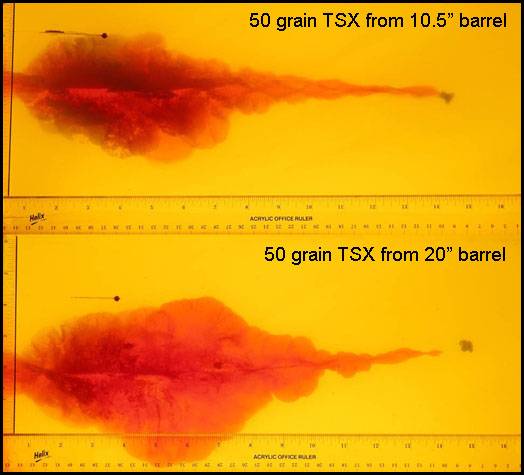
Courtesy of Black Hills
Terminal ballistic data obtained by Dr GK Roberts in both bare gel and gel after passing through auto safety glass, when fired from a 14.5” M4 barrel, shows how wells this projectile performs.
Bare gel
Penetration = 14.7”
Recovered diameter = 0.47”
Auto safety glass
Penetration = 17.0”
Recovered diameter = 0.36”
Being a monolithic bullet, the 50 grain TSX is actually slightly longer than a lead-core/copper-jacketed 55 grain FMJ bullet. The 50 grain TSX projectile does not have a cannelure per se, however, the case-mouth is crimped into the top relief-band of the bullet. The primers are also crimped in place. The 50 grain TSX is loaded in WCC 5.56mm brass. The round is charged with a ball powder. The lot of this ammunition that I evaluated had neither sealed primers nor sealed case-mouths, though it is reported that Black Hills will be remedying this situation in the near future.
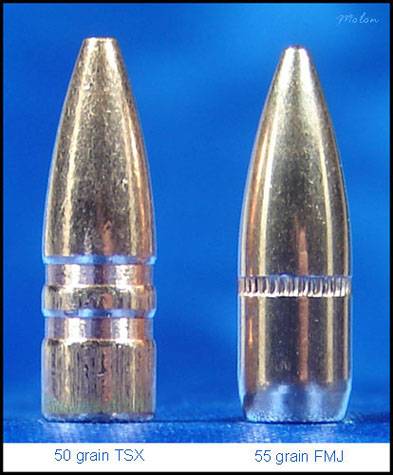
Speed is fine . . .
I chronographed the Black Hills 5.56mm 50 grain TSX ammunition from a semi-automatic AR-15 with a chrome-lined, NATO chambered 20” Colt M16A2 barrel.
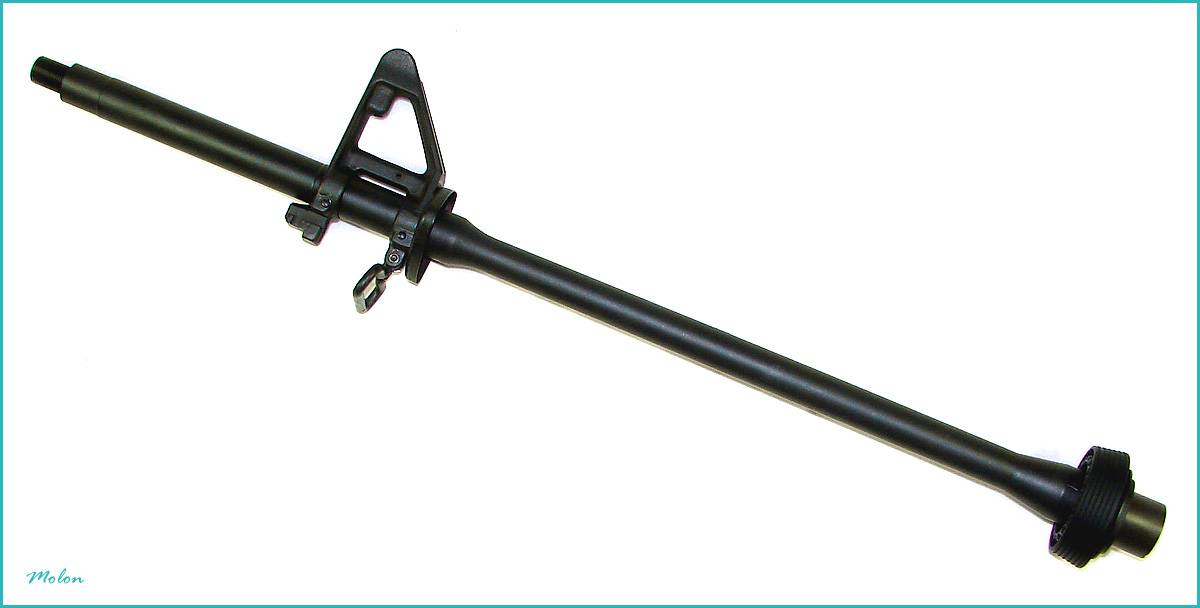
Chronographing was conducted using an Oehler 35-P chronograph with “proof screen” technology. The Oehler 35P chronograph is actually two chronographs in one package that takes two separate chronograph readings for each shot and then has its onboard computer analyze the data to determine if there is any statistically significant difference between the two readings. If there is, the chronograph “flags” the shot to let you know that the data is invalid. There was no invalid data flagged during this testing.
The velocity stated below is the muzzle velocity as calculated from the instrumental velocity using Oehler’s Ballistic Explorer software program. The string of fire consisted of 10 rounds over the chronograph.
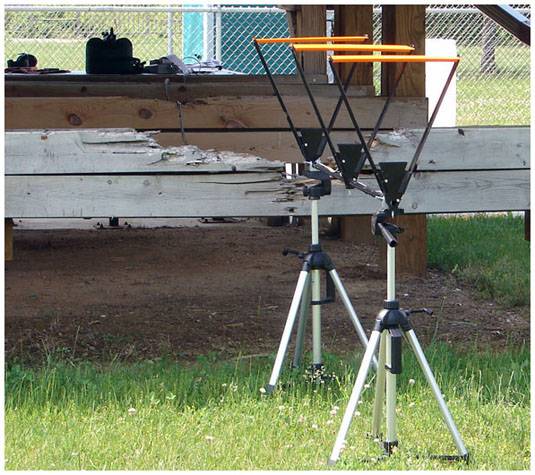

Each round was single-loaded and cycled into the chamber from a magazine fitted with a single-load follower. The bolt locked-back after each shot allowing the chamber to cool in between each shot. This technique was used to mitigate the possible influence of “chamber-soak” on velocity data. Each new shot was fired in a consistent manner after hitting the bolt release. Atmospheric conditions were monitored and recorded using a Kestrel 4000 Pocket Weather Tracker.
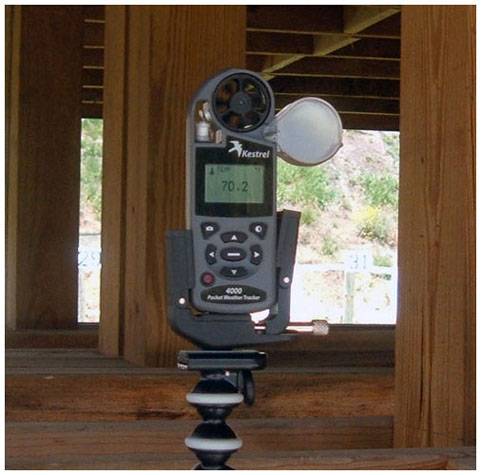
Atmospheric conditions
Temperature: 78 degrees F
Humidity: 39%
Barometric pressure: 30.10 inches of Hg
Elevation: 950 feet above sea level
The muzzle velocity for the 10-shot string of the Black Hills 5.56mm 50 grain TSX ammunition fired from the 20” Colt barrel was 3419 FPS with a standard deviation of 11 FPS and a coefficient of variation of 0.32%!
For those of you who might not be familiar with the coefficient of variation (CV), it is the standard deviation, divided by the mean (average) muzzle velocity and then multiplied by 100 and expressed as a percentage. It allows for the comparison of the uniformity of velocity between loads in different velocity spectrums; e.g. 77 grain loads running around 2,650 fps compared to 55 grain loads running around 3,250 fps.
For comparison (and to give you an idea of how good the CV is for this factory loaded 50 grain TSX ammunition) the mil-spec for M193 allows for a coefficient of variation of approximately 1.2%, while one of my best 77 grain OTM hand-loads, with a muzzle velocity of 2639 PFS and a standard deviation of 4 FPS, has a coefficient of variation of 0.15%.

Accuracy is final . .
I conducted an accuracy (technically, precision) evaluation of the Black Hills 5.56mm 50 grain TSX ammunition following my usual protocol. This accuracy evaluation used statistically significant shot-group sizes and every single shot in a fired group was included in the measurements. There was absolutely no use of any Group Reduction Techniques (e.g. fliers, target movement, Butterfly Shots).
The shooting set-up will be described in detail below. As many of the significant variables as was practicable were controlled for. Also, a control group was fired from the test-rifle used in the evaluation using match-grade, hand-loaded ammunition; in order to demonstrate the capability of the barrel. Pictures of shot-groups are posted for documentation.
All shooting was conducted from a concrete bench-rest from a distance of 100 yards (confirmed with a laser rangefinder.) The barrel used in the evaluation was free-floated. The free-float handguards of the rifle rested in a Sinclair Windage Benchrest, while the stock of the rifle rested in a Protektor bunny-ear rear bag. Sighting was accomplished via a Leupold VARI-X III set at 25X magnification and adjusted to be parallax-free at 100 yards. A mirage shade was used. Wind conditions on the shooting range were continuously monitored using a Wind Probe. The set-up was very similar to that pictured below.
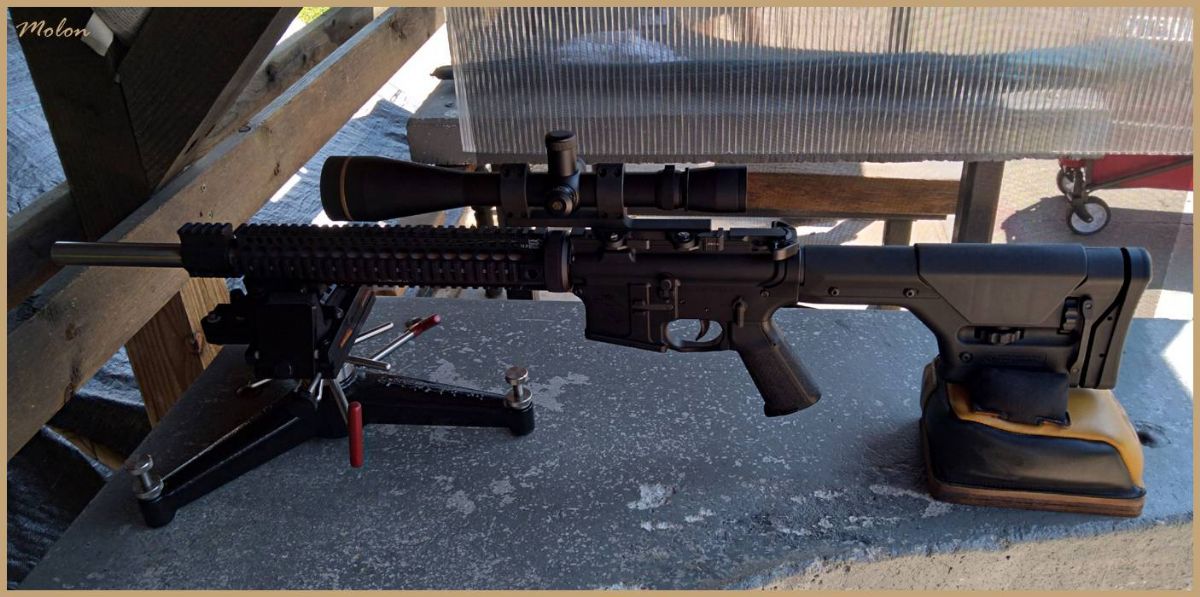
The Wind Probe.
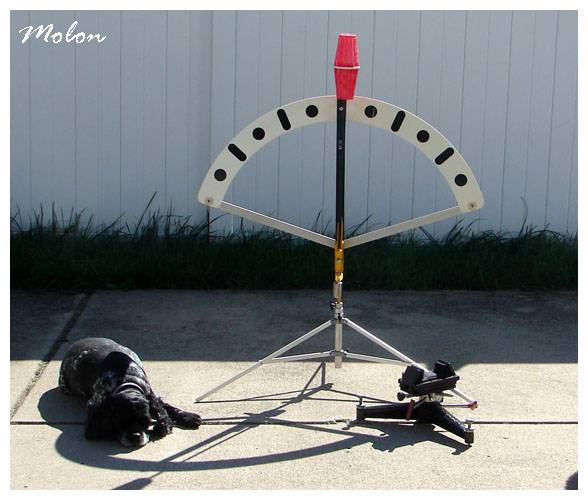
The test vehicle for this evaluation was one of my semi-automatic precision AR-15s with a 20” stainless-steel Lothar Walther barrel. The barrel has a 223 Wylde chamber with a 1:8” twist. Prior to firing the 50 grain TSX ammunition, I fired a 10-shot control group using match-grade hand-loads topped with the Sierra 55 grain BlitzKing. That group had an extreme spread of 0.83”.
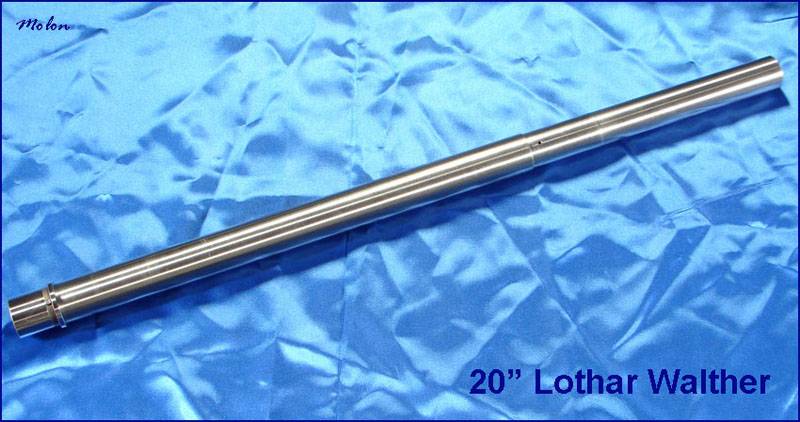
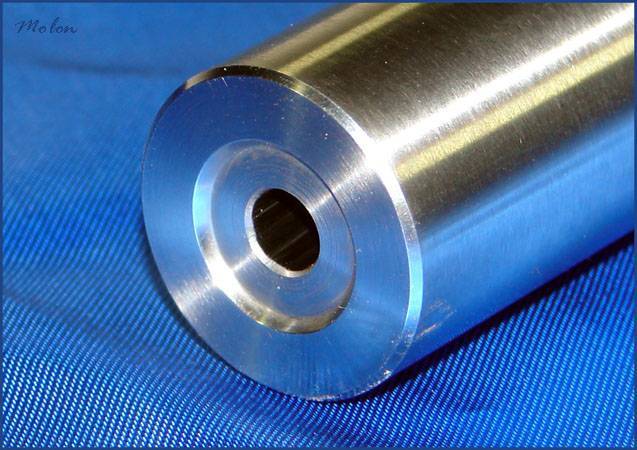
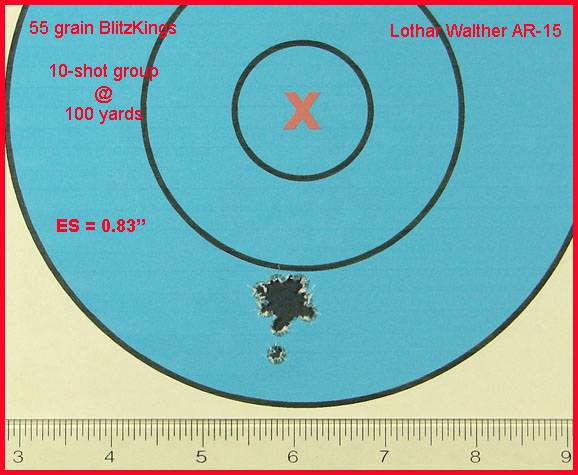
Next, three 10-shot groups of the 50 grain TSX load were fired in a row with the resulting extreme spreads:
1.64”
2.09”
1.97”
for a 10-shot group average extreme spread of 1.90”. The three 10-shot groups were over-layed on each other using RSI Shooting Lab to form a 30-shot composite group. The mean radius for the 30-shot composite group was 0.63”.
The smallest 10-shot group . . .
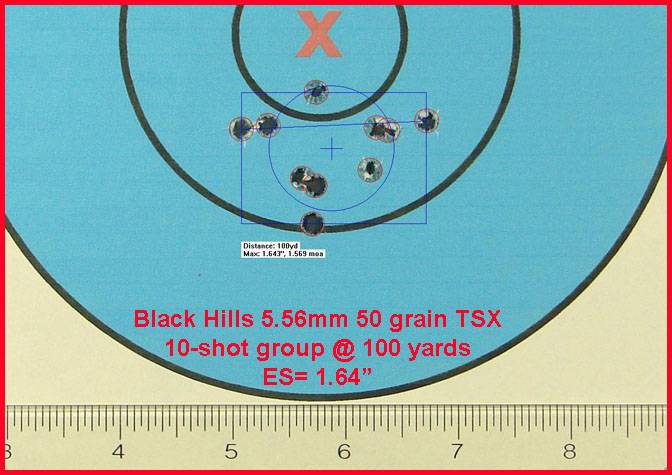
The 30-shot composite group . . .
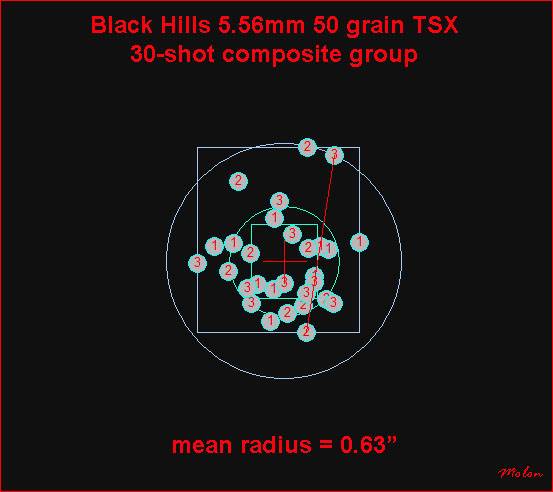

….

Today, we have a wider selection of quality self-defense ammunition for our AR-15s to choose from than ever before. The construction and function of these modern self-defense loads is not limited by the archaic confines proffered by the Hague Conventions and far surpasses the consistency of terminal ballistic properties of “old school” loads such as M193 and M855.
There are two modern schools of thought regarding the selection of the type of projectile to use in a self-defense load; the first preferring a fragmenting, heavy (75-77 grain) OTM bullet and the second opting for an expanding “blind-to-barriers” bullet. Some of the top performers in the fragmenting, heavy OTM match category are Hornady’s 5.56mm 75 grain TAP T2, the Black Hills Ammunition load utilizing the Sierra 77 grain Tipped MatchKing and the Nosler 77 grain Custom Competition.

A plethora of 5.56mm/223 Remington loads utilizing expanding barrier-blind projectiles have come to the market in the last several years. Top performers in this category include the 62 grain Trophy Bonded Bear Claw found in Federals LE223T3 load and the Nosler 64 grain Bonded Solid Base bullet with “Protected Point Design” loaded in Nosler Defense Ammunition. Both of these bullets have their lead-cores bonded to their copper jackets. (Both of these bullets are also found in the 5.56mm FBI loads.) Another top performer in the expanding barrier-blind category is the Barnes 50 grain TSX bullet found in the 5.56mm Black Hills load. This is the load that is the focus of this range report.

The monolithic (all copper) Barnes 50 grain TSX hollow-point bullet used in the 5.56mm Black Hills load is a proprietary design; it’s not the same 50 grain TSX projectile that is available as a reloading component. The proprietary 50 grain TSX was developed to provide better blind-to-barriers performance after passing through automobile safety glass (windshields) compared to the standard TSX projectiles. The original TSX bullets have unfortunate occurrences of the expanding petals shearing-off (or collapsing-in on themselves) when passing through auto safety glass. The proprietary 50 grain TSX has greatly improved on this situation (although the petals of the new 50 grain TSX still tend to collapse-in on themselves when passing through sheet metal barriers.)
A side effect of the proprietary 50 grain TSX projectile’s ability to expand and retain its petals after passing through auto safety glass is that the velocity expansion threshold of the new projectile has risen compared to the original TSX design (from approximately 1900 FPS to approximately 2300 FPS). This is where the increased velocity of the 5.56mm load (compared to a standard 223 Remington load) proves beneficial.
The new design of the proprietary 50 grain TSX, combined with the increased velocity of the 5.56mm load (along with the relatively shorter length of the 50 grain projectile) allows this load to be adequately stabilized from a wide variety of barrel twist rates and produce extremely consistent terminal ballistic properties from a wide variety of barrel lengths. The pic below shows that the Black Hills 5.56mm 50 grain TSX load fired from a 10.5” barrel produces nearly the same results in bare ballistic gelatin as the load does when fired from a 20” barrel.

Courtesy of Black Hills
Terminal ballistic data obtained by Dr GK Roberts in both bare gel and gel after passing through auto safety glass, when fired from a 14.5” M4 barrel, shows how wells this projectile performs.
Bare gel
Penetration = 14.7”
Recovered diameter = 0.47”
Auto safety glass
Penetration = 17.0”
Recovered diameter = 0.36”
Being a monolithic bullet, the 50 grain TSX is actually slightly longer than a lead-core/copper-jacketed 55 grain FMJ bullet. The 50 grain TSX projectile does not have a cannelure per se, however, the case-mouth is crimped into the top relief-band of the bullet. The primers are also crimped in place. The 50 grain TSX is loaded in WCC 5.56mm brass. The round is charged with a ball powder. The lot of this ammunition that I evaluated had neither sealed primers nor sealed case-mouths, though it is reported that Black Hills will be remedying this situation in the near future.

Speed is fine . . .
I chronographed the Black Hills 5.56mm 50 grain TSX ammunition from a semi-automatic AR-15 with a chrome-lined, NATO chambered 20” Colt M16A2 barrel.

Chronographing was conducted using an Oehler 35-P chronograph with “proof screen” technology. The Oehler 35P chronograph is actually two chronographs in one package that takes two separate chronograph readings for each shot and then has its onboard computer analyze the data to determine if there is any statistically significant difference between the two readings. If there is, the chronograph “flags” the shot to let you know that the data is invalid. There was no invalid data flagged during this testing.
The velocity stated below is the muzzle velocity as calculated from the instrumental velocity using Oehler’s Ballistic Explorer software program. The string of fire consisted of 10 rounds over the chronograph.


Each round was single-loaded and cycled into the chamber from a magazine fitted with a single-load follower. The bolt locked-back after each shot allowing the chamber to cool in between each shot. This technique was used to mitigate the possible influence of “chamber-soak” on velocity data. Each new shot was fired in a consistent manner after hitting the bolt release. Atmospheric conditions were monitored and recorded using a Kestrel 4000 Pocket Weather Tracker.

Atmospheric conditions
Temperature: 78 degrees F
Humidity: 39%
Barometric pressure: 30.10 inches of Hg
Elevation: 950 feet above sea level
The muzzle velocity for the 10-shot string of the Black Hills 5.56mm 50 grain TSX ammunition fired from the 20” Colt barrel was 3419 FPS with a standard deviation of 11 FPS and a coefficient of variation of 0.32%!
For those of you who might not be familiar with the coefficient of variation (CV), it is the standard deviation, divided by the mean (average) muzzle velocity and then multiplied by 100 and expressed as a percentage. It allows for the comparison of the uniformity of velocity between loads in different velocity spectrums; e.g. 77 grain loads running around 2,650 fps compared to 55 grain loads running around 3,250 fps.
For comparison (and to give you an idea of how good the CV is for this factory loaded 50 grain TSX ammunition) the mil-spec for M193 allows for a coefficient of variation of approximately 1.2%, while one of my best 77 grain OTM hand-loads, with a muzzle velocity of 2639 PFS and a standard deviation of 4 FPS, has a coefficient of variation of 0.15%.

Accuracy is final . .
I conducted an accuracy (technically, precision) evaluation of the Black Hills 5.56mm 50 grain TSX ammunition following my usual protocol. This accuracy evaluation used statistically significant shot-group sizes and every single shot in a fired group was included in the measurements. There was absolutely no use of any Group Reduction Techniques (e.g. fliers, target movement, Butterfly Shots).
The shooting set-up will be described in detail below. As many of the significant variables as was practicable were controlled for. Also, a control group was fired from the test-rifle used in the evaluation using match-grade, hand-loaded ammunition; in order to demonstrate the capability of the barrel. Pictures of shot-groups are posted for documentation.
All shooting was conducted from a concrete bench-rest from a distance of 100 yards (confirmed with a laser rangefinder.) The barrel used in the evaluation was free-floated. The free-float handguards of the rifle rested in a Sinclair Windage Benchrest, while the stock of the rifle rested in a Protektor bunny-ear rear bag. Sighting was accomplished via a Leupold VARI-X III set at 25X magnification and adjusted to be parallax-free at 100 yards. A mirage shade was used. Wind conditions on the shooting range were continuously monitored using a Wind Probe. The set-up was very similar to that pictured below.

The Wind Probe.

The test vehicle for this evaluation was one of my semi-automatic precision AR-15s with a 20” stainless-steel Lothar Walther barrel. The barrel has a 223 Wylde chamber with a 1:8” twist. Prior to firing the 50 grain TSX ammunition, I fired a 10-shot control group using match-grade hand-loads topped with the Sierra 55 grain BlitzKing. That group had an extreme spread of 0.83”.



Next, three 10-shot groups of the 50 grain TSX load were fired in a row with the resulting extreme spreads:
1.64”
2.09”
1.97”
for a 10-shot group average extreme spread of 1.90”. The three 10-shot groups were over-layed on each other using RSI Shooting Lab to form a 30-shot composite group. The mean radius for the 30-shot composite group was 0.63”.
The smallest 10-shot group . . .

The 30-shot composite group . . .


….

